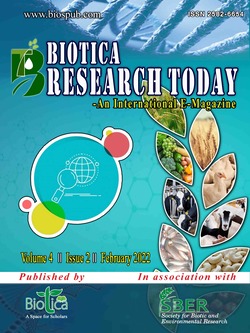
Recent Innovates on the Development of Solar Dryers
Vimaladevi S.*
Dr. M.G.R. Fisheries College and Research Institute, Tamil Nadu Dr. J. Jayalalithaa Fisheries University, Thalainayeru, Nagapattinam, Tamil Nadu (614 712), India
Krishnaveni K.N.
Dr. M.G.R. Fisheries College and Research Institute, Tamil Nadu Dr. J. Jayalalithaa Fisheries University, Thalainayeru, Nagapattinam, Tamil Nadu (614 712), India
Sudarshan S.
Dr. M.G.R. Fisheries College and Research Institute, Tamil Nadu Dr. J. Jayalalithaa Fisheries University, Thalainayeru, Nagapattinam, Tamil Nadu (614 712), India
Vijayarahavan V.
Dr. M.G.R. Fisheries College and Research Institute, Tamil Nadu Dr. J. Jayalalithaa Fisheries University, Thalainayeru, Nagapattinam, Tamil Nadu (614 712), India
Alamelu V.
Dr. M.G.R. Fisheries College and Research Institute, Tamil Nadu Dr. J. Jayalalithaa Fisheries University, Thalainayeru, Nagapattinam, Tamil Nadu (614 712), India
DOI: NIL
Keywords: Salting, Smoking, Solar Dryer, Traditional methods
Abstract
Drying has been practiced since time immemorial for preserving fish. Sun drying, salting and smoking are considered as traditional methods for preserving fish. Most commonly performed fish preservation techniques was drying and salting. The advent of modern techniques of preservation such as freezing and canning reduced the importance of older methods. Nevertheless, the traditional methods were still in practice. In India, the export of dried and cured fish products has been declined due to the account of low quality. Sun drying hardly involves any expenditure as sun’s radiation is plentifully available for free of cost. Solar dryer technology can be utilized in small-scale food processing industries for producing hygienic, high-quality food products. It promotes renewable energy sources as income-generating units, apart from saving the world from the ill effects of climate change. The products produced with the solar dryer’s attained superior quality due to the advantage of controlling the parameters that influence quality and drying rate.
Downloads
not found
Reference
Gore, S.B., Relekar S.S., Kulkarni, A.K., Joshi, S.A., Pathan, J.G.K, Telvekar, P.A., Bankar, S.S., 2019. Quality of traditionally salted and dried fishes of ratnagiri fish market, Maharashtra. International Journal of Science, Environment and Technology 8(3), 663-673.
Islam, M., Islam, M.I., Tusar, M., Limon, A.H., 2019. Effect of cover design on moisture removal rate of a cabinet type solar dryer for food drying application. Energy Procedia 160, 769-776.
Lingayat, A., Chandramohan, V.P., Raju, V.R.K., 2017. Design, development and performance of indirect type solar dryer for banana drying. Energy Procedia 109, 409-416.
Mehta, P., Samaddar, S., Patel, P., Markam, B., Maiti, S., 2018. Design and performance analysis of a mixed mode tent-type solar dryer for fish-drying in coastal areas. Solar Energy 170, 671-681.
